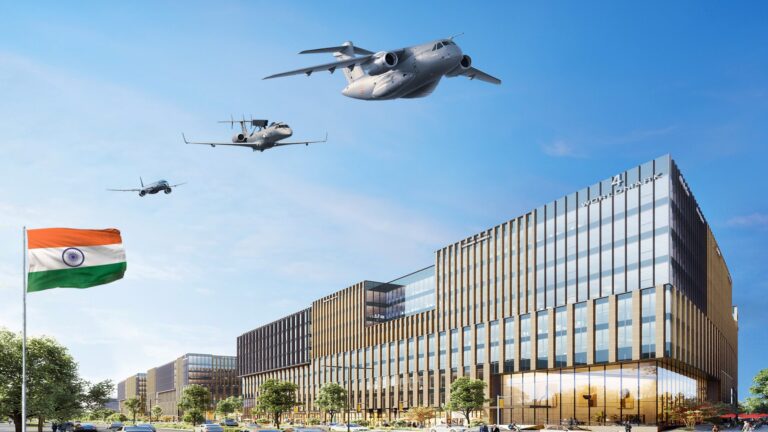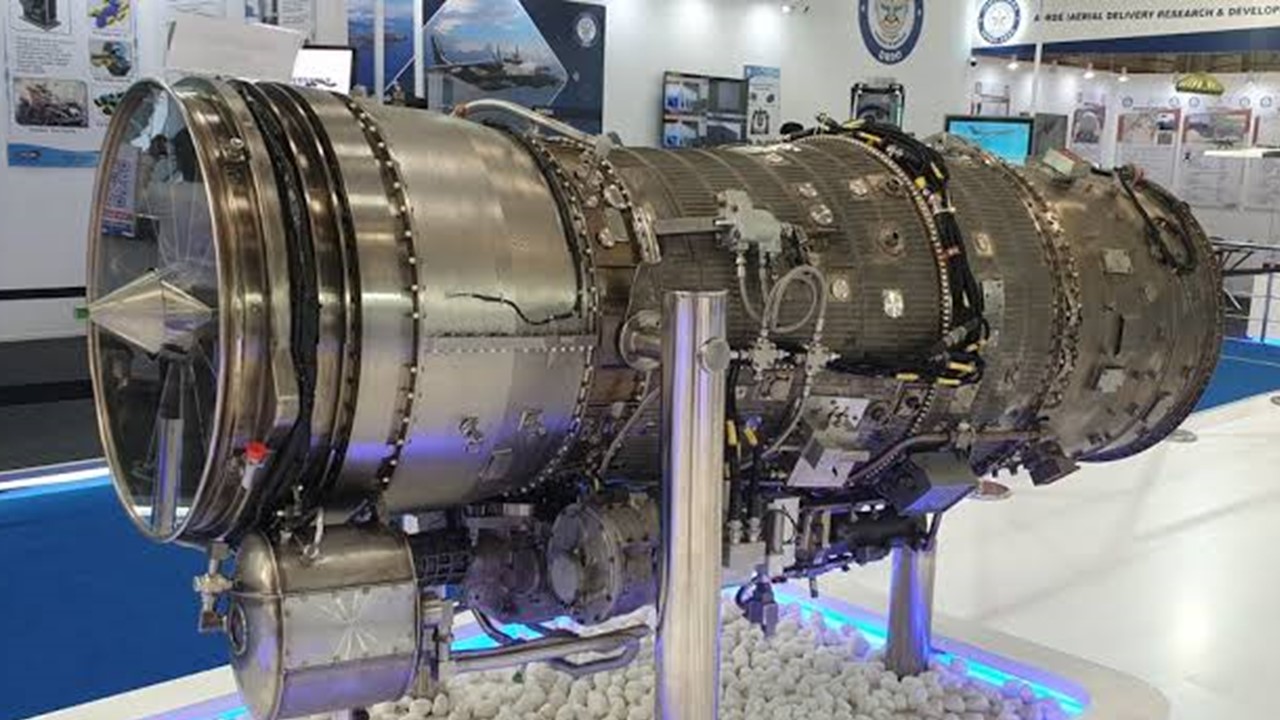
New Delhi just cleared the Kaveri engine for in-flight testing—a big win for India’s aerospace sector. This marks a major step forward in developing India’s own jet engines. The news came from the Gas Turbine Research Establishment (GTRE), part of DRDO. GTRE has been working on the Kaveri project since the late 1980s.
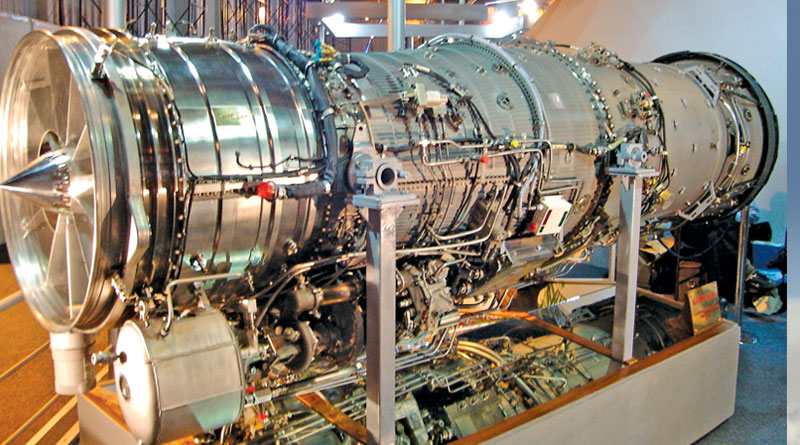
The Kaveri engine was meant for the LCA Tejas but ran into several technical difficulties over the years. Due to these problems, DRDO shifted focus to a dry version for UAVs like the Ghatak stealth drone.
So far, the Kaveri engine has passed tough ground tests and received multiple performance upgrades. It now delivers a dry thrust of around 49 to 51 kN, which suits unmanned aircraft. There are plans to add an afterburner that could boost thrust by about 73 to 75 kN.
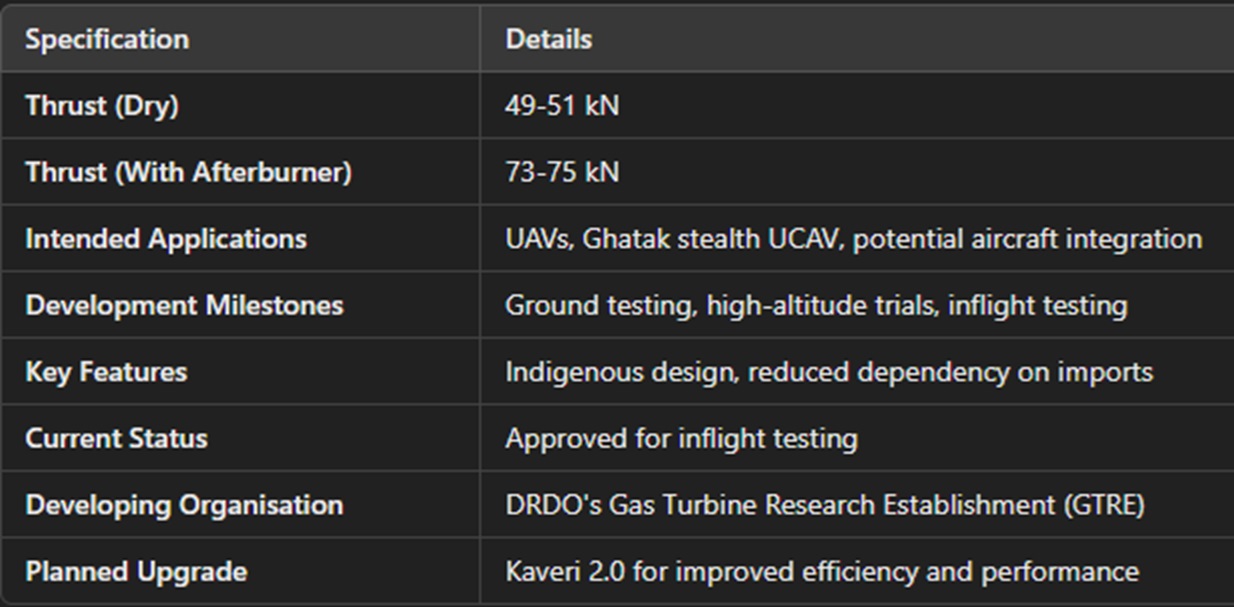
Kaveri Level of Readiness
Getting the go-ahead for in-flight testing comes after thorough testing steps, including high-altitude trials in Russia and extensive ground tests in India. Completing these evaluations shows that the Kaveri engine has reached a level of readiness suitable for integrating with aircraft, at least on a small scale. The next phase is to attach the Kaveri engine to a flying testbed (FTB) to test its performance in actual flight conditions.
This stage will look at how the engine behaves with different flight dynamics and fits with aircraft systems. This development is not only a technical achievement; it is also crucial for India’s defense capabilities.
Having an indigenous engine decreases dependence on foreign suppliers, which is critical for national security and self-reliance in defense technologies. The Kaveri project highlights India’s goal to strengthen its aerospace industry and develop advanced military capabilities independently.
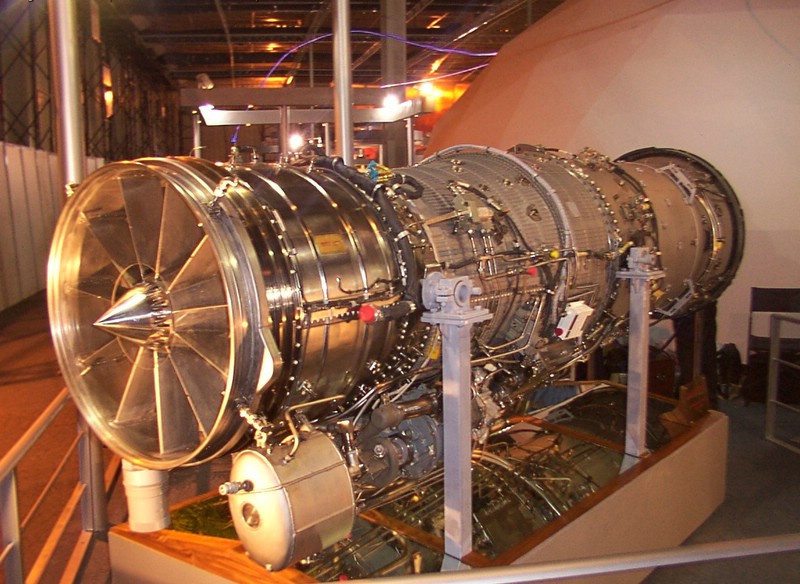
Conclusion: Kaveri Engine
Despite this progress, challenges persist. During prolonged in-flight tests, the Kaveri engine must demonstrate endurance, efficiency, and versatility. Now, DRDO and GTRE are concentrating on upgrading the engine with a new version known as Kaveri 2.0. This improved model aims to match or even exceed the Indian Air Force’s current performance standards.
Getting approval for in-flight testing is a big step forward for India’s aerospace progress. It also moves the country closer to building its own advanced jet engines without outside help.
References
- DRDO Official Website
🔗 https://shorturl.at/bdQVZ - Indian Ministry of Defence Reports
🔗 https://shorturl.at/gjsQ5 - The Hindu – Aerospace and Defence
🔗 https://shorturl.at/fpN68 - Livefist Defence
🔗 https://shorturl.at/kCFIW







